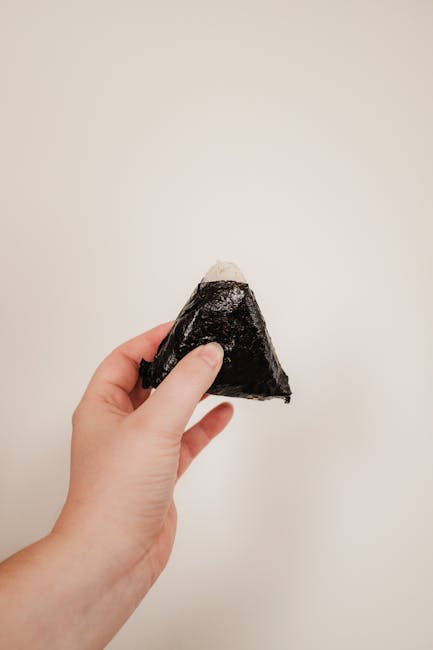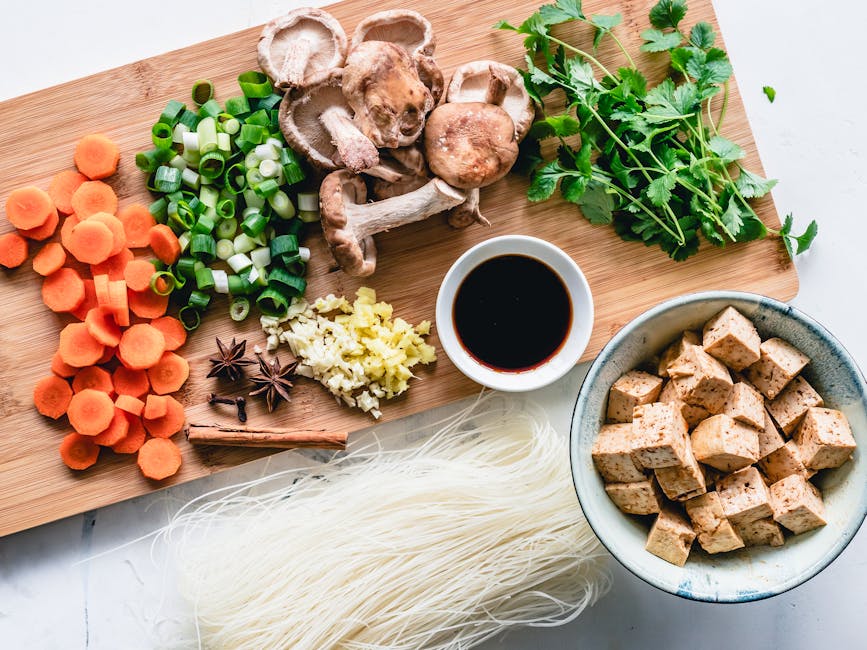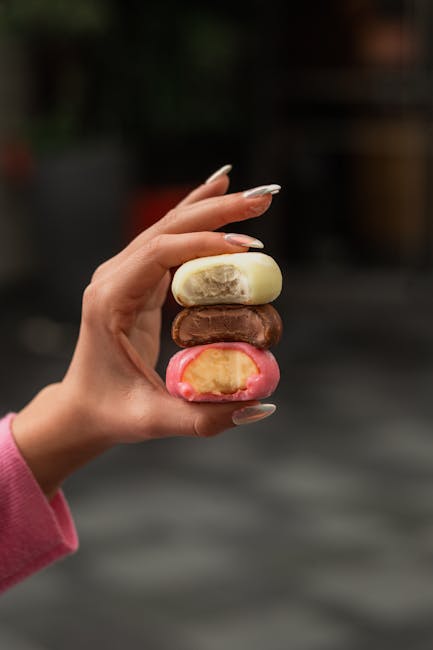8 Quick & Easy Japanese Foods to Elevate Your Everyday Table

8 Quick & Easy Japanese Foods to Elevate Your Everyday Table
Hello, konnichiwa! As a devotee of all things Japanese, from the serene beauty of a perfectly raked Zen garden to the minimalist elegance of Muji design, I'm always seeking ways to infuse a little wa (harmony) into my daily life. And what better way to do that than through the art of food?
While mastering intricate Kaiseki cuisine might be a lifelong pursuit, bringing the essence of Japanese flavors to your table doesn't have to be complicated. Today, I'm sharing eight quick and easy Japanese food ideas that are not only delicious but also beautifully simple, allowing you to embrace the Japanese aesthetic even on the busiest of days. These recipes emphasize fresh ingredients, mindful preparation, and, of course, a touch of omotenashi (hospitality) for yourself and anyone you share them with. So, let's embark on this culinary journey!
1. Onigiri (Rice Balls): Portable Perfection

Onigiri, those delightful little rice balls, are a staple of Japanese convenience stores and picnics. They're incredibly versatile, endlessly customizable, and surprisingly easy to make. Think of them as the Japanese equivalent of a sandwich, but with a far more refined and charming presentation.
Ingredients:
- Cooked Japanese short-grain rice (sushi rice works perfectly)
- Nori seaweed sheets
- Your choice of filling (see suggestions below!)
- Water (for wetting your hands)
Filling Ideas:
- Tuna mayonnaise (canned tuna mixed with Japanese mayonnaise and a dash of soy sauce)
- Umeboshi (pickled plum)
- Salmon flakes
- Kombu tsukudani (simmered kelp)
- Chicken Soboro (seasoned ground chicken)
Instructions:
- Wet your hands with water to prevent the rice from sticking.
- Place a small amount of rice (about 1/2 cup) in the palm of your hand.
- Create a well in the center of the rice and add your chosen filling.
- Gently shape the rice into a triangle, ball, or cylinder. Don't squeeze too tightly!
- Wrap the bottom portion of the onigiri with a strip of nori.
- Serve immediately or wrap in plastic wrap for later.
Design Tip: Presentation matters! Use a simple bento box or a small ceramic plate to arrange your onigiri. A sprig of fresh herbs or a delicate blossom adds a touch of natural elegance.
2. Tamagoyaki (Japanese Rolled Omelette): Egg-cellent Simplicity

Tamagoyaki is a sweet and savory rolled omelette that's a beloved component of bento boxes and breakfast plates. While it requires a little practice to perfect the technique, the basic recipe is incredibly straightforward. It's a testament to how something so simple can be so delicious and visually appealing.
Ingredients:
- 3 eggs
- 1 tablespoon sugar
- 1 tablespoon soy sauce
- 1 tablespoon mirin (sweet rice wine) or sake
- 1 tablespoon dashi (optional, for extra flavor)
- Vegetable oil, for greasing the pan
Instructions:
- In a bowl, whisk together the eggs, sugar, soy sauce, mirin (or sake), and dashi (if using).
- Heat a tamagoyaki pan (or a small non-stick skillet) over medium-low heat.
- Lightly grease the pan with vegetable oil.
- Pour a thin layer of the egg mixture into the pan, just enough to cover the bottom.
- When the egg is partially cooked but still slightly wet, use chopsticks or a spatula to gently roll the omelette towards one side of the pan.
- Push the rolled omelette to the side, grease the empty space in the pan, and pour another thin layer of egg mixture.
- Lift the rolled omelette slightly to allow the new egg mixture to flow underneath.
- Repeat the rolling process until all the egg mixture is used up.
- Remove the tamagoyaki from the pan and let it cool slightly.
- Slice the tamagoyaki into bite-sized pieces.
Design Tip: Serve your tamagoyaki on a rectangular plate or in a small bowl. The neat, symmetrical slices are inherently pleasing to the eye. Consider garnishing with a sprinkle of green onions or a tiny dollop of grated daikon radish.
3. Miso Soup: A Warm Embrace

Miso soup is a cornerstone of Japanese cuisine, a comforting and flavorful broth that's often served with breakfast, lunch, and dinner. It's incredibly easy to make and offers a wealth of health benefits. The umami-rich flavor is both satisfying and restorative, perfect for a chilly day or a moment of quiet contemplation.
Ingredients:
- 4 cups dashi broth (or water)
- 2 tablespoons miso paste (red or white, depending on your preference)
- 1/4 cup wakame seaweed, soaked in water until rehydrated
- 1/4 cup tofu, cut into small cubes
- Green onions, thinly sliced (for garnish)
Instructions:
- Bring the dashi broth (or water) to a simmer in a saucepan.
- Reduce the heat to low.
- In a small bowl, whisk a small amount of the hot broth with the miso paste until it's completely dissolved. This prevents clumps.
- Pour the miso mixture into the saucepan and stir gently. Do not boil.
- Add the wakame seaweed and tofu to the soup.
- Simmer for a few minutes, until the tofu is heated through.
- Garnish with green onions and serve immediately.
Design Tip: Serve your miso soup in a traditional Japanese bowl with a lid. The lid helps to keep the soup warm and also adds a touch of elegance to the presentation. Use a small wooden spoon for easy sipping.
4. Quick Pickled Cucumbers (Tsukemono): Crunchy Refreshment

Tsukemono, or Japanese pickles, are a delightful accompaniment to any meal. They offer a refreshing contrast to richer flavors and provide a satisfying crunch. This quick pickled cucumber recipe is a simple way to add a touch of Japanese flair to your table.
Ingredients:
- 1 cucumber, thinly sliced
- 1 tablespoon rice vinegar
- 1 teaspoon sugar
- 1/2 teaspoon salt
- Pinch of red pepper flakes (optional, for a little heat)
Instructions:
- Place the cucumber slices in a bowl.
- In a separate bowl, whisk together the rice vinegar, sugar, salt, and red pepper flakes (if using).
- Pour the vinegar mixture over the cucumber slices and toss to combine.
- Let the cucumbers marinate for at least 15 minutes, or up to a few hours in the refrigerator.
- Serve chilled.
Design Tip: Arrange your pickled cucumbers in a small, shallow dish. The vibrant green color of the cucumbers against the light-colored dish creates a visually appealing contrast. Consider adding a few sesame seeds for added flavor and texture.
5. Edamame: Simple Snacking

Edamame, or boiled soybeans, are a quintessential Japanese snack. They're healthy, delicious, and incredibly easy to prepare. Serving edamame is a simple way to add a touch of Japanese hospitality to any gathering.
Ingredients:
- Frozen edamame pods
- Salt
Instructions:
- Bring a pot of water to a boil.
- Add the frozen edamame pods to the boiling water.
- Cook for 5-7 minutes, or until the edamame is tender.
- Drain the edamame and sprinkle generously with salt.
- Serve immediately.
Design Tip: Serve edamame in a rustic bowl or a woven basket. Provide a small dish for the empty pods. Encourage your guests to pop the beans directly into their mouths for a fun and interactive experience.
6. Tofu with Ginger and Soy Sauce: Silken Simplicity

This dish highlights the subtle beauty of tofu, allowing its delicate flavor to shine through with the help of a few simple ingredients. It's a perfect example of how Japanese cuisine can be both incredibly satisfying and remarkably minimalist.
Ingredients:
- Silken tofu, drained
- Fresh ginger, grated
- Soy sauce
- Green onions, thinly sliced (for garnish)
- Bonito flakes (optional, for extra umami)
Instructions:
- Cut the silken tofu into cubes.
- Arrange the tofu cubes on a plate.
- Top with grated ginger, soy sauce, and green onions.
- Sprinkle with bonito flakes, if desired.
- Serve immediately.
Design Tip: Use a dark-colored plate to create a dramatic contrast with the white tofu. The simple arrangement of ingredients speaks volumes about the beauty of restraint.
7. Ochazuke: Tea-Soaked Comfort

Ochazuke is a comforting and quick meal consisting of rice soaked in green tea. It's a wonderful way to use up leftover rice and can be customized with a variety of toppings. It's like a warm hug in a bowl, perfect for a light meal or a late-night snack.
Ingredients:
- Cooked Japanese rice
- Japanese green tea (sencha or genmaicha are good choices)
- Your choice of toppings (see suggestions below!)
Topping Ideas:
- Salmon flakes
- Umeboshi (pickled plum)
- Nori seaweed, shredded
- Wasabi
- Sesame seeds
- Mentaiko (spicy cod roe)
Instructions:
- Place the cooked rice in a bowl.
- Pour hot green tea over the rice until it's partially submerged.
- Top with your chosen toppings.
- Serve immediately.
Design Tip: Use a deep bowl that allows the tea to generously soak the rice. The visual appeal comes from the layering of textures and colors. A simple earthenware bowl adds to the rustic charm.
8. Kinako Mochi: Sweet Endings

While making mochi from scratch can be time-consuming, using pre-made mochi cakes makes this dessert incredibly quick and easy. Kinako, or roasted soybean flour, adds a nutty and subtly sweet flavor that perfectly complements the chewy texture of the mochi. It's a delightful way to end a meal with a touch of Japanese sweetness.
Ingredients:
- Pre-made mochi cakes
- Kinako (roasted soybean flour)
- Sugar (optional, for extra sweetness)
Instructions:
- If the mochi cakes are frozen, thaw them according to the package instructions.
- Toast the mochi cakes until they are soft and slightly puffed up. You can use a toaster oven, a grill, or even a microwave.
- Coat the toasted mochi cakes generously with kinako.
- Sprinkle with sugar, if desired.
- Serve immediately.
Design Tip: Arrange the kinako mochi on a small plate with a sprig of fresh mint or a delicate flower. The contrast between the earthy color of the kinako and the bright green of the mint creates a visually appealing dessert.
And there you have it – eight quick and easy Japanese food ideas that you can incorporate into your everyday life. Remember, the key is to embrace simplicity, use fresh ingredients, and pay attention to the presentation. By incorporating these elements, you can bring a little bit of wa and omotenashi into your home and create a truly harmonious dining experience. Itadakimasu!
Post a Comment